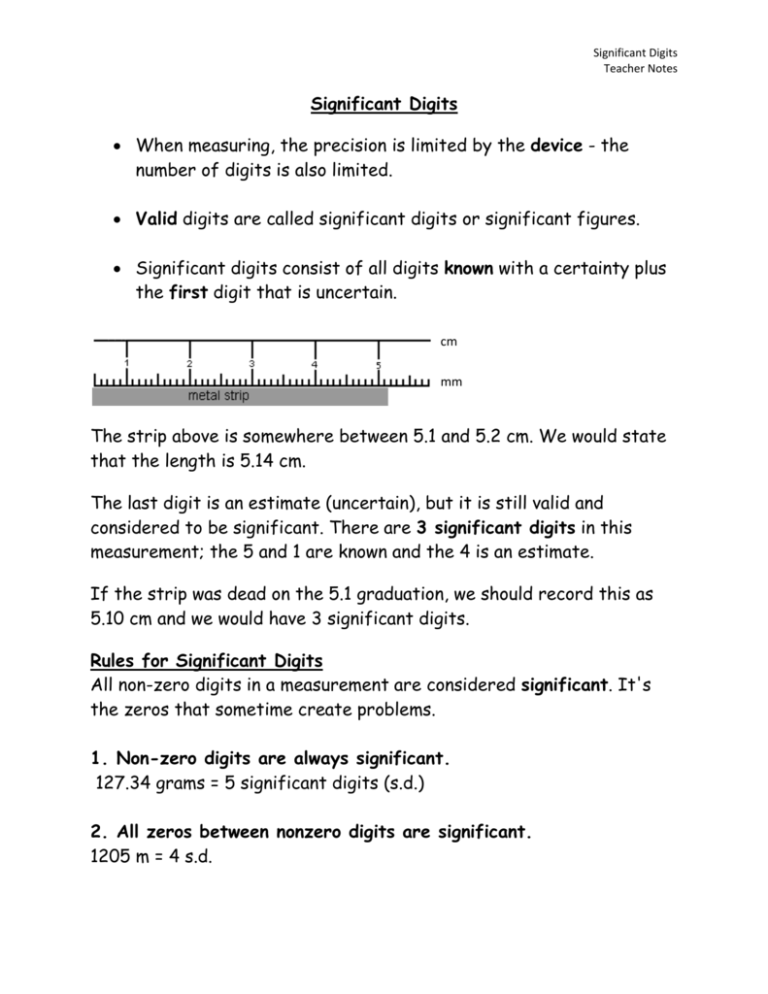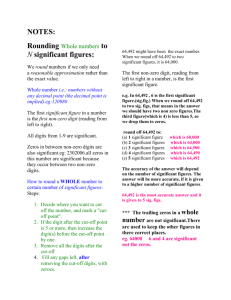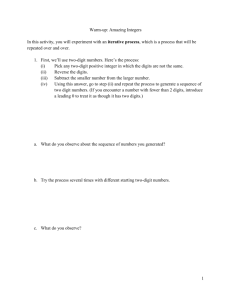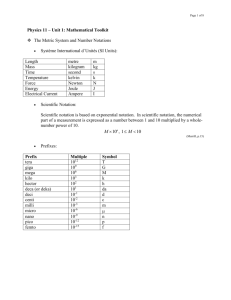Rules for Significant Digits
advertisement

Significant Digits Teacher Notes Significant Digits When measuring, the precision is limited by the device - the number of digits is also limited. Valid digits are called significant digits or significant figures. Significant digits consist of all digits known with a certainty plus the first digit that is uncertain. cm mm The strip above is somewhere between 5.1 and 5.2 cm. We would state that the length is 5.14 cm. The last digit is an estimate (uncertain), but it is still valid and considered to be significant. There are 3 significant digits in this measurement; the 5 and 1 are known and the 4 is an estimate. If the strip was dead on the 5.1 graduation, we should record this as 5.10 cm and we would have 3 significant digits. Rules for Significant Digits All non-zero digits in a measurement are considered significant. It's the zeros that sometime create problems. 1. Non-zero digits are always significant. 127.34 grams = 5 significant digits (s.d.) 2. All zeros between nonzero digits are significant. 1205 m = 4 s.d. Significant Digits Teacher Notes 3. All final zeros to the right of a decimal point are significant. 21.50 grams = 4 s.d. 4. Zeros used only for spacing the decimal are not significant. 0.0025 = 2 s.d. 5. Zeros to the right of a whole number are vague, meaning they are unclear as to whether they should be significant or not (e.g. did that person measure 500 meters exactly or did they round up to 500 from 489m?) To avoid confusion, use scientific notation and when in doubt, assume zero values are not significant. 5600 = 5.6 x 103 = 2 s.d. Operations With Significant Digits Adding & Subtracting When adding or subtracting measurements, the final answer cannot be more precise than the least precise measurement. In other words, the answer must have as few decimal places as the fewest being added or subtracted. Example: Add the following. 6. 234 2.12 3.4 11.754 correctly written as 11.8 Significant Digits Teacher Notes Since the least precise measurement is 3.4 (only 1 decimal), then the answer should only be as precise (go to 1 decimal). Therefore you have 3 significant digits. Use the same rules for subtraction. Multiplying & Dividing A different method is used for multiplying and dividing. You will get very comfortable with this method since most of your calculations in Physics 20 will involve multiplying and dividing. Note the measurement or factor with the least significant digits. Round the final answer to this number of digits. Example: Multiply the following. 3.22 (3 s.d.) x 2.1 (2 s.d.) 6.762 correctly written as 6.8 (2 s.d.)








